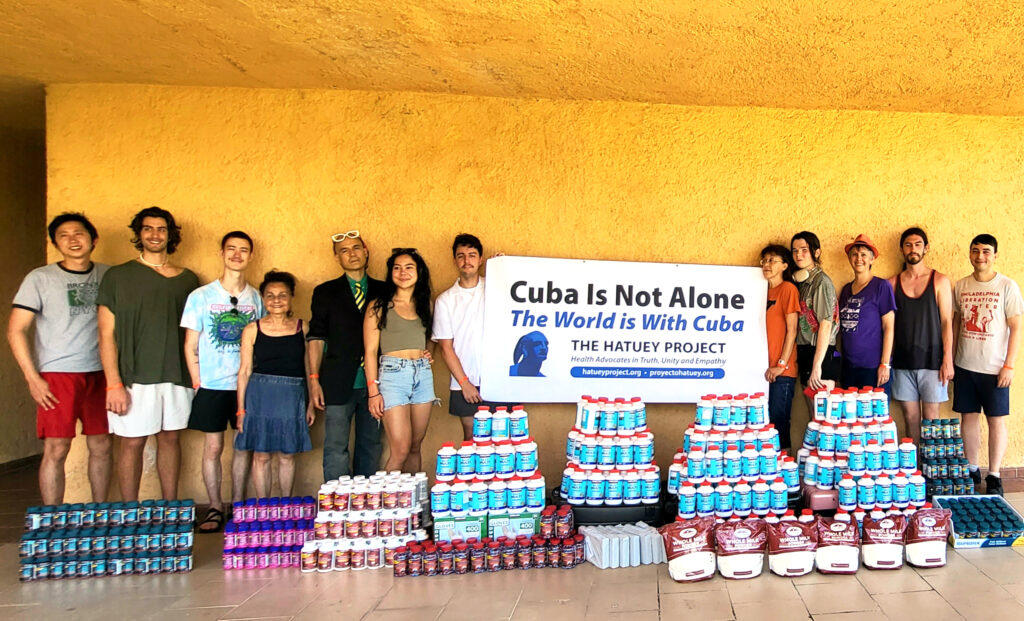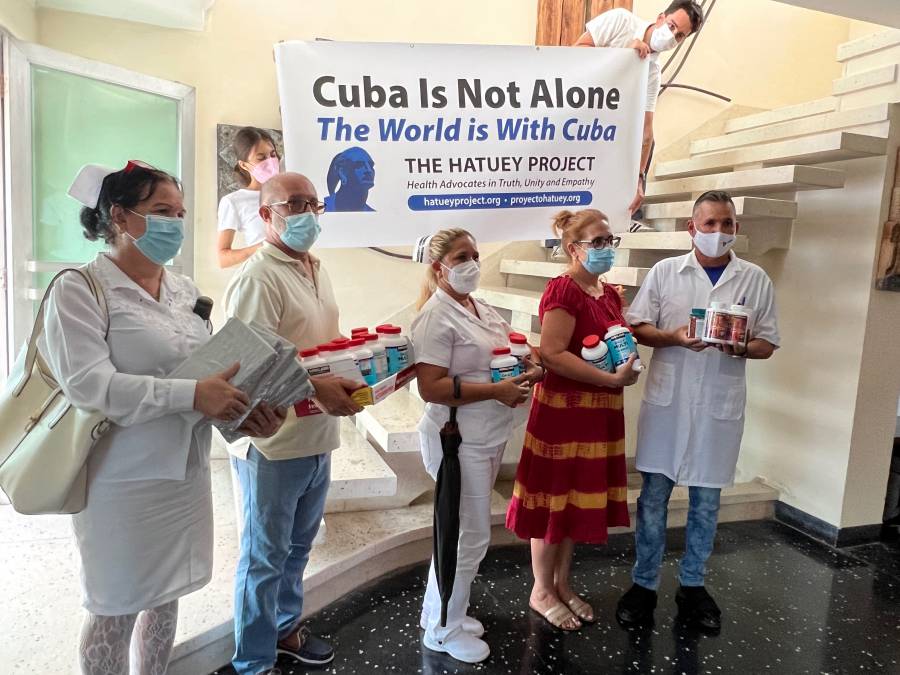by Melina Ivanchikova
reprinted from Liberation News
[Note: although this article is dated Sept. 7, it describes the experiences of the author who was in Cuba in July, predating the Matanzas fire, as part of a delegation of activists delivering the first shipment of medicines to Cuba on behalf of the Hatuey Project.]

I traveled to Cuba for the first time this past July, with a group of anti-blockade activists to learn about the revolution and the people. Given the severe challenges due to the U.S. economic blockade, we also brought medical supplies destined for the island’s maternity homes. I asked questions about maternity care in Cuba and shared the painful story of my first son’s birth and my frustrating and illogical 10-day separation from him in hospital. The visceral realization of what human-centered instead of profit-centered care is like, and how my experience should have been different, hit home.
Our itinerary included a visit to a maternity home in Santa Clara. But out of caution, our group was not able to tour the home because a member of our group tested positive for COVID-19. She was isolated and well cared for during that time. Instead, the doctors and nurses from a nearby clinic came to visit us where we were staying. They had the opportunity to describe their work, answer our questions and accept our donations, a small gesture of solidarity against the blockade. In spite of supply shortages, the maternal homes continue to provide a high-level of care. The unrelenting and punishing U.S. blockade chokes Cuba’s ability to replenish non-renewable and necessary supplies like those we brought with us in extra 50-pound suitcases full of prenatal vitamins, acetaminophen, yeast infection medicines, and more. We were happy to deliver the medical donations provided to us by the Hatuey Project.
I shared my story and asked what it would have been like for me to give birth in Cuba. My first son was born with a small hole in his lung and admitted into the neonatal intensive care unit for 10 days. The pinhole in my son’s lung closed over night, but he went on to suffer two apnea episodes that lengthened his stay in the NICU, in the hospital located an hour by car from our home. I was exhausted after a 23-hour labor and difficult birth. Despite the importance of fostering the mother-infant bond and such things as skin-to-skin infant-parent bonding advertised on posters in any maternity ward, this was difficult to achieve in a hospital setting where we were separated from each other. I was reduced to visitor status within two days, the standard discharge time in American hospitals. In Cuba, we would both have been cared for and kept together as long as needed, one of the doctors told me.
With the triumph of the revolution came the effort to liberate women from the social and economic repression of the past. In 1962 the first pilot-program for maternity homes was established as a comprehensive center for maternal care to support rural women’s health, and later expanded to serving any woman with a high-risk pregnancy who needed the support the centers could offer.
Pregnancy homes were established shortly after the revolution to address a problem not unique to Cuba: the need to provide necessary prenatal medical care to women with high-risk pregnancies who lived far from the nearest hospital. It was also a trend in many African and Latin American countries facing similar challenges. High-risk conditions include having had a previous caesarean section, previous fetal death, previous underweight birth, uterine rupture, multiples and more.

